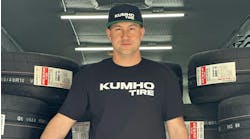The fastest cars in the world are headed to one of the fastest racing circuits in the world. Autodromo Nazionale Monza, also known as the Temple of Speed, plays host to Round 13 of the 2017 FIA Formula One World Championship this weekend with the Italian Grand Prix.
The 5.793-kilometer (3.6-mile), 11-turn circuit has hosted Formula One since 1950, with this year’s Italian Grand Prix serving as the venue’s 67th grand prix. The average winning speed in the first Italian Grand Prix was 176.55 kph (109.7 mph). Last year’s was 237.558 kph (147.612 mph). As Formula One technology has advanced, its display of speed has been most impressive at Monza.
The circuit’s long straights and flowing corners allow teams to bring a low-downforce package where their drivers are able to approach speeds of nearly 360 kph (224 mph) and average lap times of 259 kph (161 mph). In fact, the fastest lap ever recorded in Formula One took place at Monza.
Juan Pablo Montoya holds the record and the bragging rights at Monza, with his lap of 1:19.525 in his Williams BMW set during practice for the 2004 Italian Grand Prix delivering an average speed of 262.242 kph (162.950 mph). This came during the height of the V10 engine era, where seven suppliers – Ferrari, Mercedes, Honda, Renault, BMW, Toyota and Ford-Cosworth – engaged in an arms race where peak power output was approximately 940 horsepower with RPMs in excess of 19,000.
Engines only had to last a single race in that time, whereas now teams are limited to using four engines a year. But the march of time and technology means that in 2017 the all-time fastest lap in Formula One history might be in jeopardy.
At every venue Formula One has visited in 2017, the track record has been broken. This past Saturday at Circuit de Spa-Francorchamps which hosted the Belgian Grand Prix, Scuderia Ferrari driver Kimi Räikkönen broke the all-time fastest lap at Spa by .587 of a second in final practice. The previous mark of 1:44.503 was set by Jarno Trulli in his Toyota during the second round of qualifying for the 2009 Belgian Grand Prix. But a few hours after Räikkönen’s fast lap, Mercedes’ Lewis Hamilton set a new benchmark en route to the pole, besting Räikkönen’s time by 1.363 seconds and crushing Trulli’s eight-year mark by 1.95 seconds.
Spa is a power track steeped in history, and as the series heads to the even faster Autodromo Nazionale Monza, another track record beckons.
Despite current-generation Formula One cars being outfitted with turbocharged 1.6-liter V6 engines, engineers have wrung considerable power from these tightly packaged powerplants. And thanks to a drastically different aerodynamic and tire package that dramatically increased downforce and corner speeds, lap times have dropped substantially, by as much as five seconds in some instances.
The rub, however, is that these new Formula One cars are not as fast in a straight line, as their increased downforce creates increased drag. It’s in the corners where these cars shine.
Monza has 11 turns, which means that despite its long straights, there is speed to be found. Can Montoya’s 13-year-old mark survive this inevitable evolution of Formula One? Time will literally tell.
As the sport has evolved greatly over its 67-year history, Haas F1 Team has evolved greatly in its barely two-year history.
After scoring 29 points in 2016, the American team has already surpassed that inaugural season tally 12 races into its sophomore campaign. Drivers Romain Grosjean and Kevin Magnussen have combined for 35 points with still eight races remaining.
Haas F1 Team’s evolution has been aided by its partnerships with Ferrari and Dallara, where the two companies provide critical motorsports expertise in addition to some Italian lineage.
Maranello-based Ferrari delivers Haas F1 Team its power unit, gearbox and overall technical support, and famed racecar builder Dallara has Haas F1 Team’s design staff embedded in its Parma headquarters.
This unique relationship allowed Haas F1 Team to hit the ground running in 2016. The massive task of creating a Formula One team from scratch was made slightly less daunting by the more than 130 collective years of racing experience brought by Ferrari and Dallara. And when another new car needed to be built under a new set of rules for 2017 – all while Haas F1 Team was still competing in its first season – Ferrari and Dallara proved their worth again.
Currently in a dogfight with its midfield competitors, Haas F1 Team’s Italian alliance is again on display. Haas F1 Team is seventh in the constructors standings, only one point ahead of eighth-place Renault, but just five points back of sixth-place Toro Rosso and 10 points arrears fifth-place Williams.
It’s an electric battle that now moves to the electric atmosphere of Monza, and it gives a charge to Haas F1 Team and its Italian partners.


